Start your business
Build your brand
Create your website
Online store editor
Customize your store
Store themes
Find business apps
Shopify app store
Own your site domain
Domains & hosting
Explore free business tools
Tools to run your business
Sell your products
Sell online or in person
Sell online
Grow your business online
Sell across channels
Reach millions of shoppers and boost sales
Sell in person
Point of Sale (POS)
Sell globally
International sales
Sell wholesale & direct
Business-to-business (B2B)
Market your business
Reach & retain customers
Market across social
Social media integrations
Chat with customers
Shopify Inbox
Nurture customers
Shopify Email
Know your audience
Gain customer insights
Manage your business
Track sales, orders & analytics
Measure your performance
Analytics and Reporting
Manage your stock & orders
Inventory & order management
Automate your business
Shopify Flow
Shopify Developers
Build with Shopify's powerful APIs
Plus
A commerce solution for growing digital brands
All Products
Explore all Shopify products & features
Help and support
Get 24/7 support
How-to guides
Read in-depth business guides
Business courses
Learn from proven experts
Shopify blog
Business strategy tips
What is Shopify?
How our commerce platform works
Shopify Editions
New, innovative Shopify products
Founder stories
Learn from successful merchants
Branding
Build your brand from scratch
Marketing
Build a marketing plan
Ecommerce SEO
Improve your search ranking
Social media strategy
Turn social into sales
Business growth
Scale your business
Business name generator
Logo maker
Stock photography
Business plan template
Link in bio tool
QR code generator
Changelog
Your source for recent updates
Winter ’24 Edition
The latest 100+ product updates
All Editions
Archive of past Shopify Editions
Newsroom
All company news and press releases
Start selling with Shopify today
Start your free trial with Shopify today—then use these resources to guide you through every step of the process.
Learn how to establish effective brand guidelines and create a style guide for your business with examples from successful brands.
Start your online business today.
For free.
As a business owner, every day you’re faced with opportunities to introduce your brand to the world, engage with potential customers, and stake your position in the market. But how do you ensure you’re putting your best foot forward? How can you guarantee brand consistency everywhere you show up?
The answer? A comprehensive set of brand guidelines and a brand style guide. These are precious resources for a brand, both at launch and while scaling. They keep team members on the same page and provide a consistent experience for customers.
Ahead, learn how to establish effective brand guidelines and create a brand style guide for your business. Look to other successful businesses for inspiration, with examples of strong brand guidelines from well-known brands like Fenty Beauty and Ben & Jerry’s.
Brand guidelines are rules a business creates for how it presents itself to the public, including its voice, tone, and design aesthetic. Consistent branding helps customers have the same experiences wherever they interact with the business.
Brand guidelines also include elements like mission statement, brand values, and brand story. These are important elements that will guide the more granular decisions. For example, when determining your brand aesthetic and tone, ask yourself if it accurately communicates your mission and values.
Sometimes called a brand book or brand kit, a brand style guide is a document that dictates how your brand will look and sound in every application. It is a useful resource when you’re working with designers, printers, manufacturers, contractors, and the media. It dictates the acceptable use of your logo, your specific brand colors and fonts, and the tone of your communications.
Smaller businesses with limited time and resources can create simple brand guidelines, called “minimum viable brand guidelines.” The important thing is to follow the brand guidelines consistently so they’re effective.
Creating a marketing message that is unmistakably, undeniably your organization’s can ensure your message and image are synonymous with one another, regardless of who’s working on it.
To protect your brand identity, you should consider every possible place your brand will show up, from a print ad to an in-store display to social media ads. Creating clear brand guidelines and a brand style guide is an important step for new businesses—but be sure they’re adaptable as you scale.
Most businesses don’t have a full picture of what a style guide, or brand book, actually looks like, even if they’ve heard the term before. A brand style guide is a collection of rules for how your public image looks and sounds. It acts as a compass for your brand elements, ensuring your business’s design, video, image, and text content all point due north—wherever that is for you.
If you aren’t sure what to include in your brand style guide, here are a few things to cover:
In some cases, your style guide may also provide additional context, such as your brand story. Here’s an example from Vans’ brand guidelines that does just that:
Your brand guidelines will be used to create a living document that can be shared both internally and externally. There are two components to a brand style guide: visual style and written style. Let’s dig in.
Your visual style dictates the look of your brand and marketing. A basic visual style guide includes rules for your logo, typography (font style, appearance, and structure), and brand color palette. It contains brand assets and clear guidelines about how to use them.
Consider how your logo should appear on both light and dark backgrounds, and define the colors you’ll use consistently. The idea is to put thought into how you want your brand to look (and how you don’t want it to look).
Medium’s visual brand outlines acceptable use of the brand’s logo, including rules around colors and contrast:
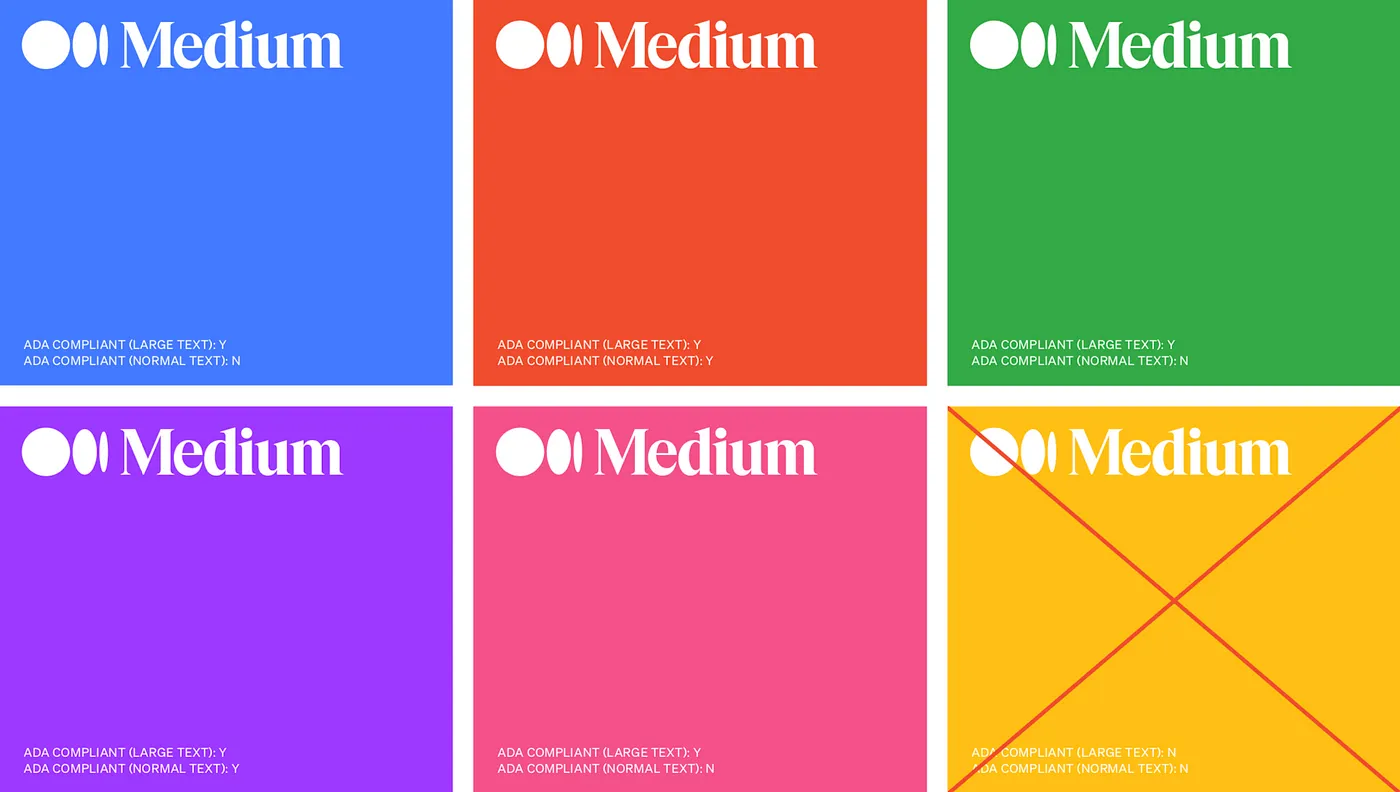
Beyond your logo, define brand colors as well. Outdoor retailer REI does this with an extensive list of colors and its hex codes. Again, you don’t need to be as comprehensive, but you do want to make sure to cover all the colors, as well as provide context into how and where they should be used.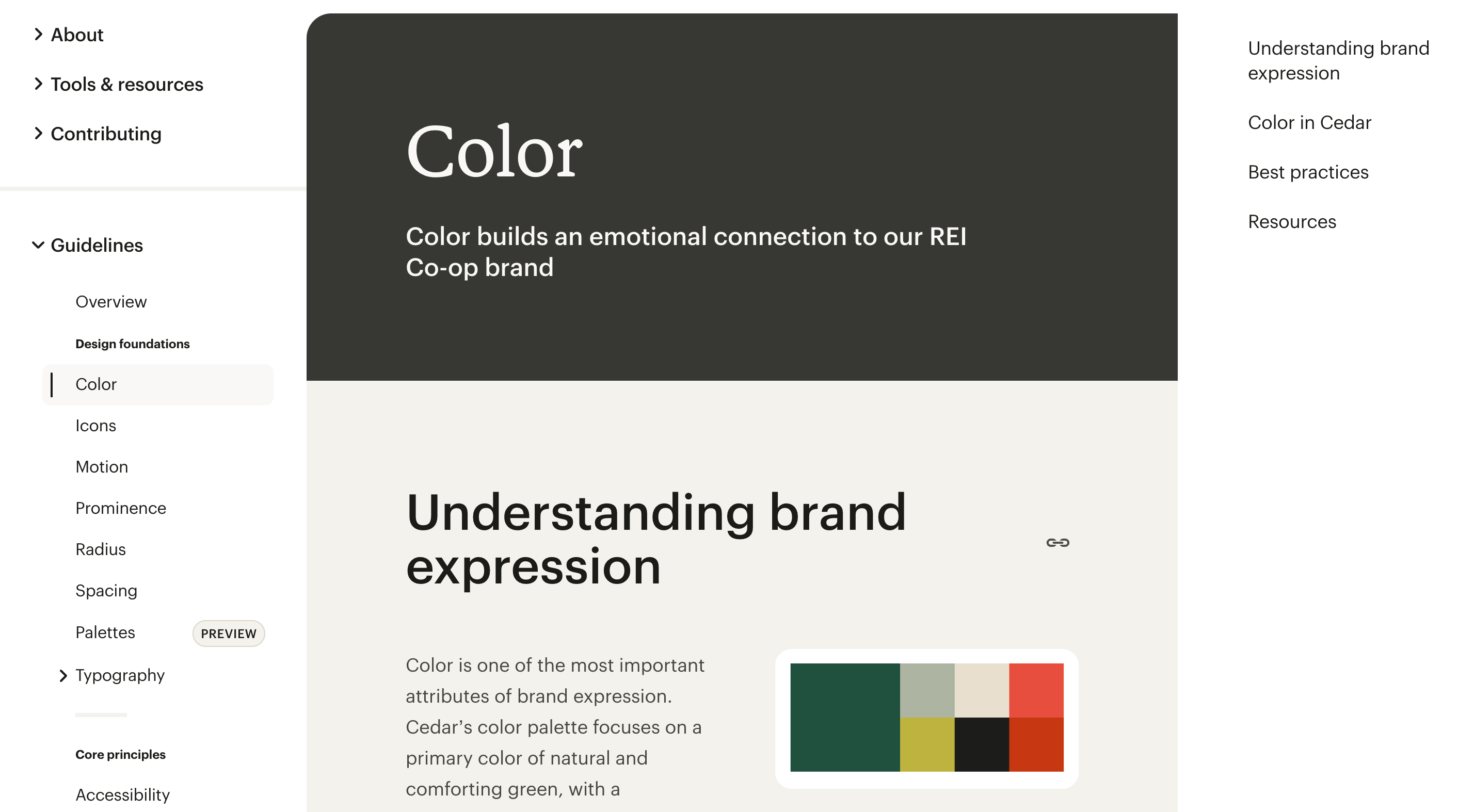
Your brand guidelines will contain a suite of fonts that will be used across properties and channels. At minimum, this includes a body font and a headline font as well as any fonts used in your logo or as accents.
Your written style defines how your brand uses words to communicate. It includes things like voice, tone, and specific audience considerations. Who buys your products? What outcomes do they hope to achieve? What voice will resonate with them? Remember the style choices you make are for your audience, not for you.
One thing that can be tricky is defining your brand’s tone of voice—specifically, parsing the difference between your brand’s voice and its tone. Your voice is constant. Your brand should always sound like your brand, regardless of the channel or situation.
Tone, on the other hand, is how your voice adapts to different situations. For example, the tone you use with a customer who’s just made a sale is different from how you’d speak to a frustrated customer.
One of the most important things a written style guide does is explain how to find a balance between voice and tone. A well-defined voice can translate from tone to tone without losing its unique quality.
In this example, note how Help Scout defines its voice as universally friendly, clear, and direct. That’s how Help Scout sounds across all mediums. Its tone, however, is made to adapt to and match individual situations. 
These guidelines enable the Help Scout team to deploy a voice unique to its brand while still being considerate of the situation. As an example, being friendly and clear sounds different in a celebratory context than it does when speaking with a frustrated customer.
BarkBox is another great example of how your brand can sound like you, even when your tone changes. Take a look at how its voice translates from an Instagram post to a help article aimed at frustrated customers.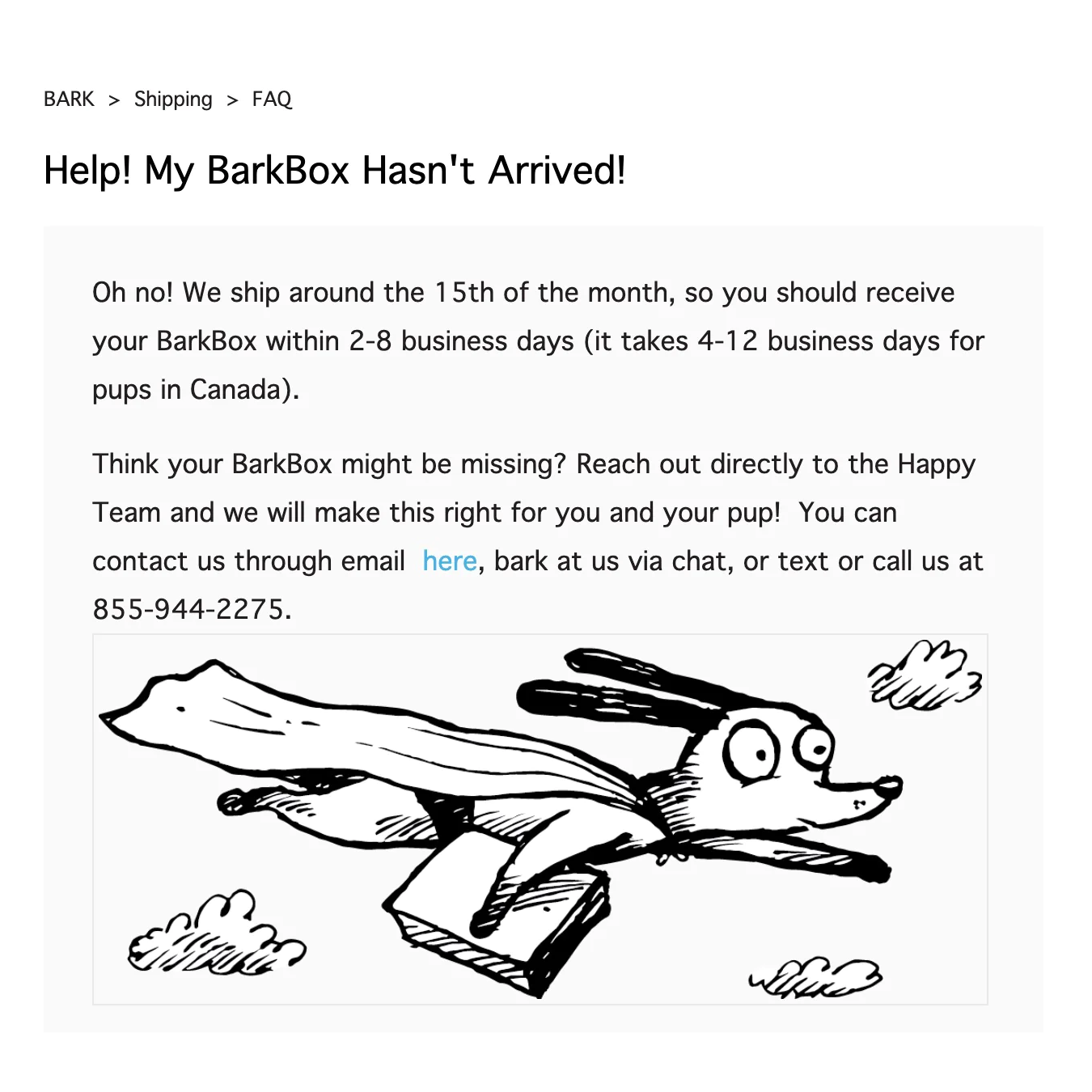
A post shared by BarkBox (@barkbox)
The language sounds like it came from the same place—and is an extension of the same brand—but it’s been adapted to do two distinct jobs. Both are lighthearted, but notice how the tweet uses humor while the support article takes a more direct approach.
Starbucks identifies the tone it hopes to convey in its communications as functional and expressive.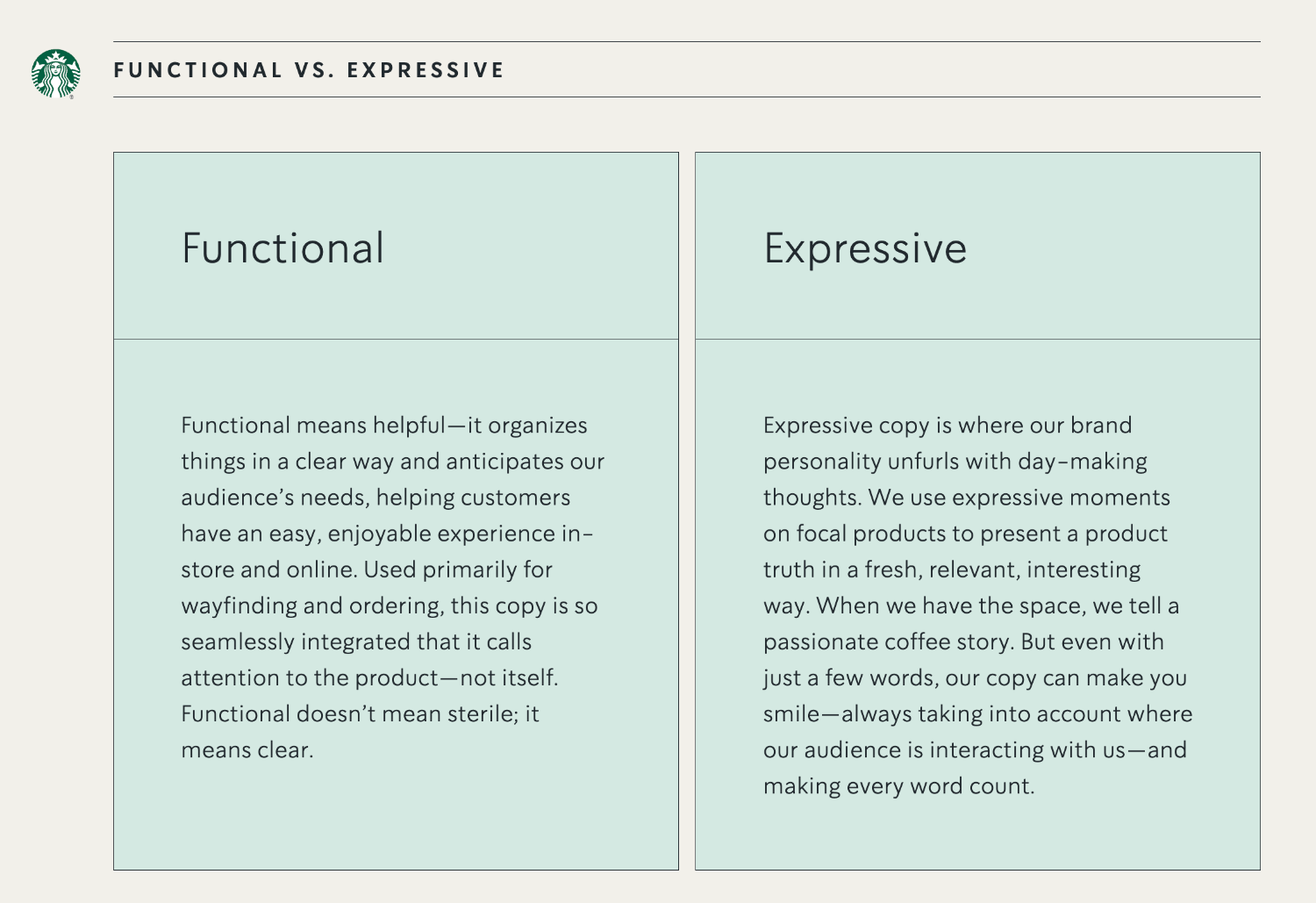
Being highly specific is important to a brand of any size, especially one with as much reach as Starbucks. That’s why its brand guidelines contain examples for how its brand message will sound across multiple touchpoints.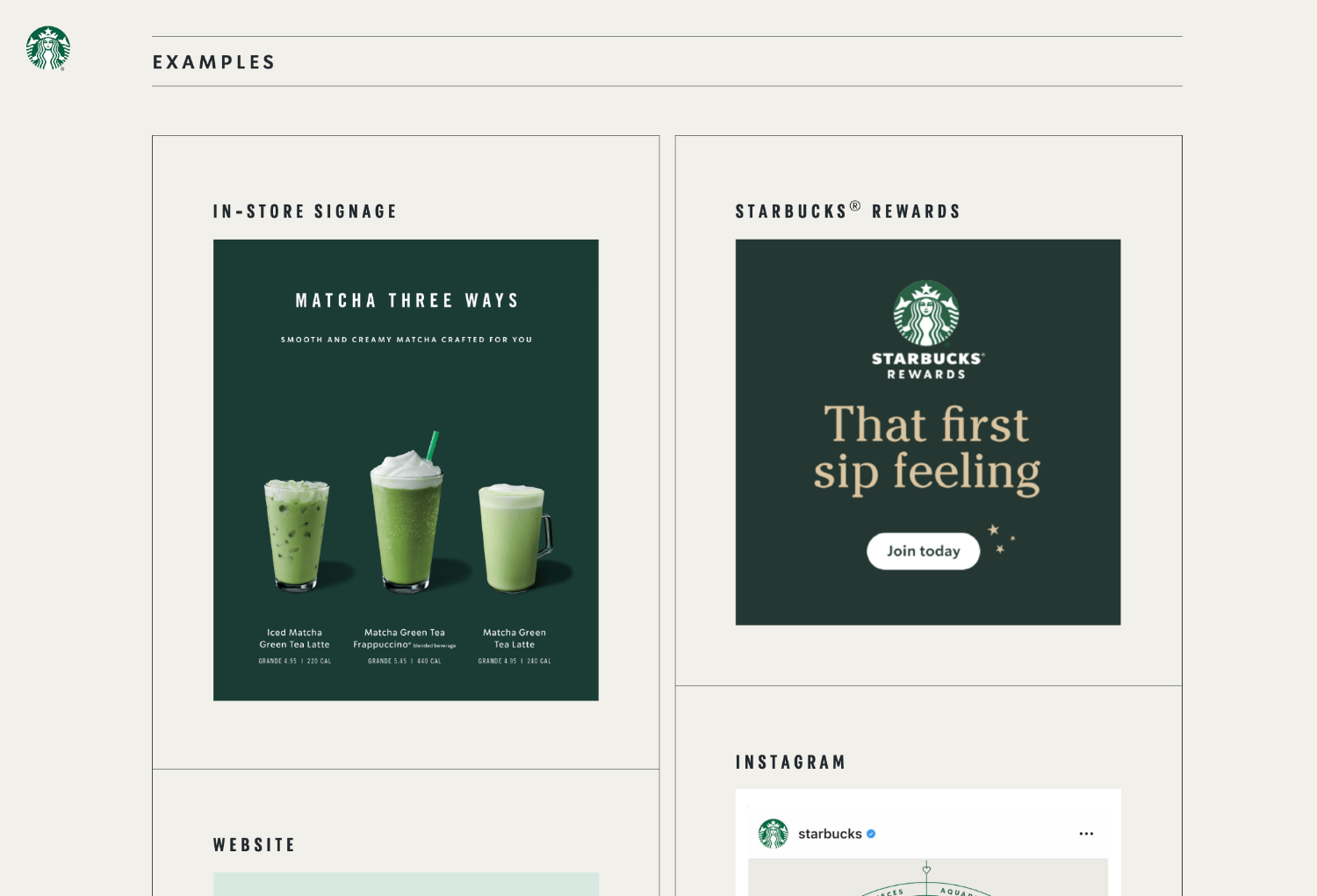
As mentioned earlier in this article, your brand guidelines can be more comprehensive than a simple brand style guide. Consider adding more context about your company that will help anyone applying your style to understand the intention behind it.
These elements can include: your brand’s story, a mission statement, brand values, team bios, a company history, and brand promise.
Branding and brand identity can be tough concepts to wrap your mind around in the abstract. That’s why learning from the example of other brands can be helpful. Several brands, both large and small, post their guidelines publicly, so you can take a look and see what an established brand’s style rules look like. Sustainable clothing brand tentree has a comprehensive style guide, complete with iconography, downloadable brand assets for logo usage, and more.
Sustainable clothing brand tentree has a comprehensive style guide, complete with iconography, downloadable brand assets for logo usage, and more.
The brand’s rulebook contains guidelines for all its visual elements, including fonts, colors, illustration style, product photography, and even animation and motion. It also dives into voice and tone, defining the brand’s key messaging with do’s and don’ts, establishing grammar guidelines, and offering a brand glossary.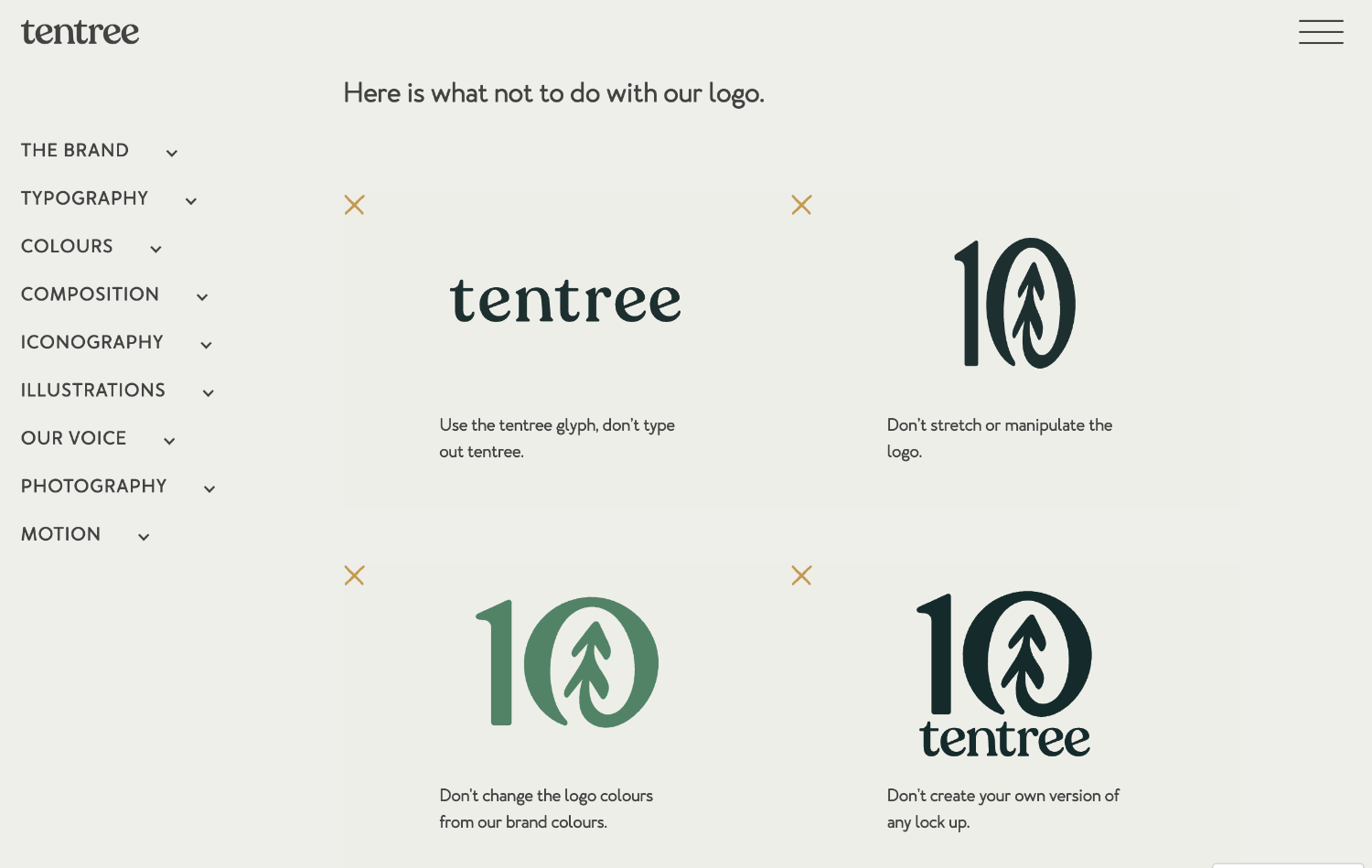
 Wolf Circus, a women-owned ecommerce business that sells handmade jewelry, offers a great example of a simple style guide that covers the absolute essentials and provides all the necessary information to enable new employees and collaborators to represent the brand accurately.
Wolf Circus, a women-owned ecommerce business that sells handmade jewelry, offers a great example of a simple style guide that covers the absolute essentials and provides all the necessary information to enable new employees and collaborators to represent the brand accurately.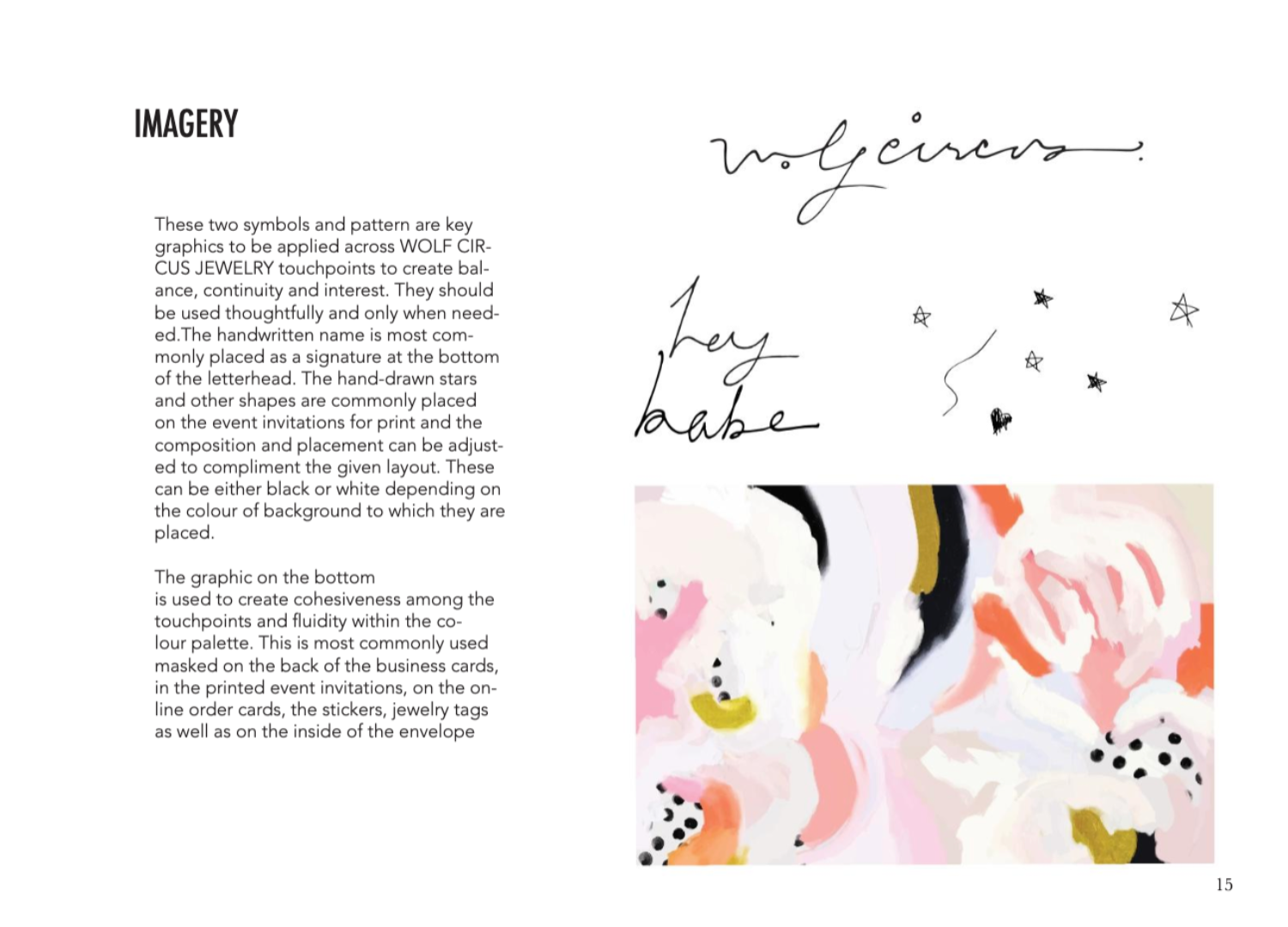
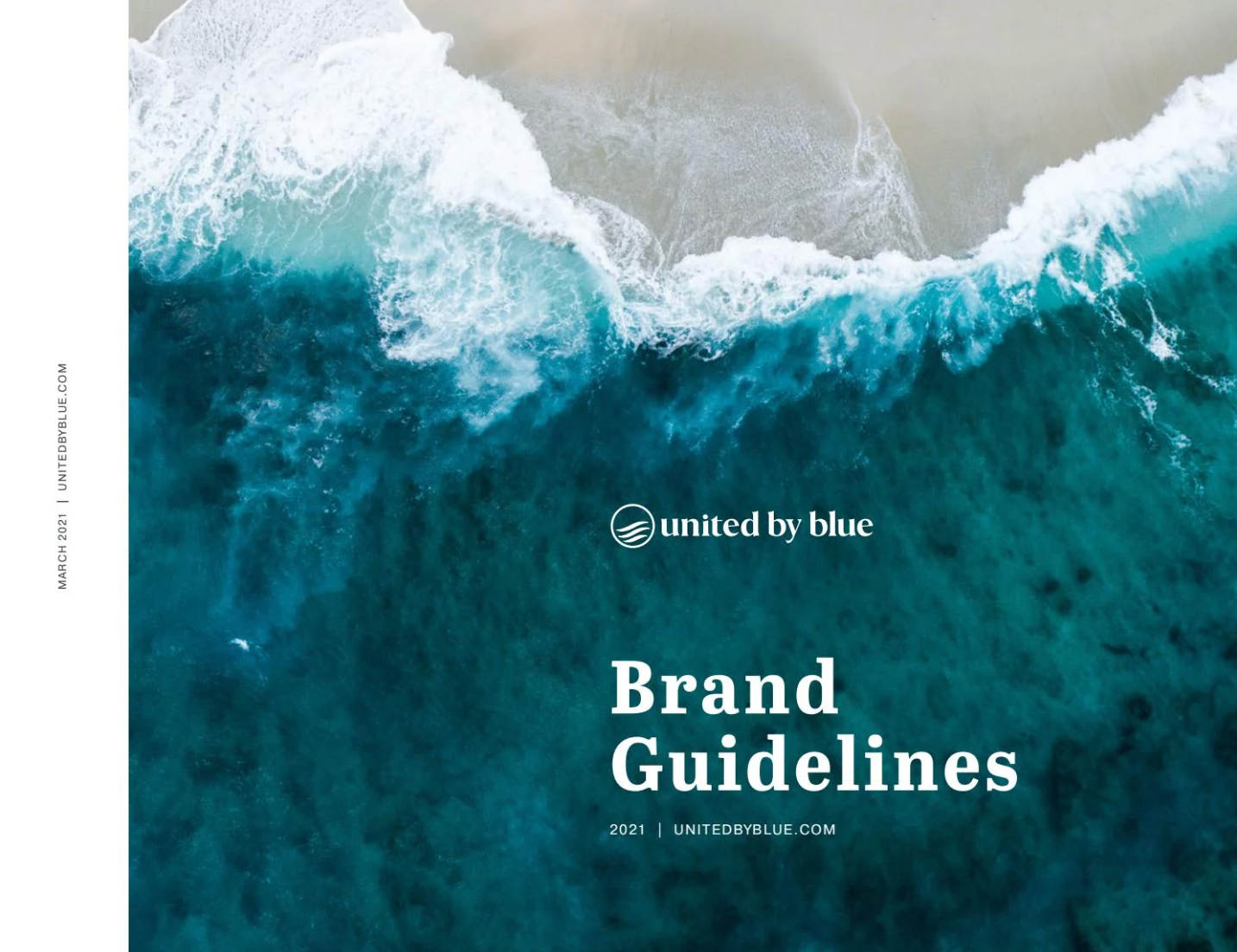
Nitro cold brew High Horse Coffee hired a pro to develop its brand identity. This includes all elements of a visual style guide, from multiple versions of its logo to packaging design for the brand’s coffee bean bags.
WIth a playful, ambitious voice in a casual tone, High Horse knows how to speak to its customers in a distinct way, on every surface.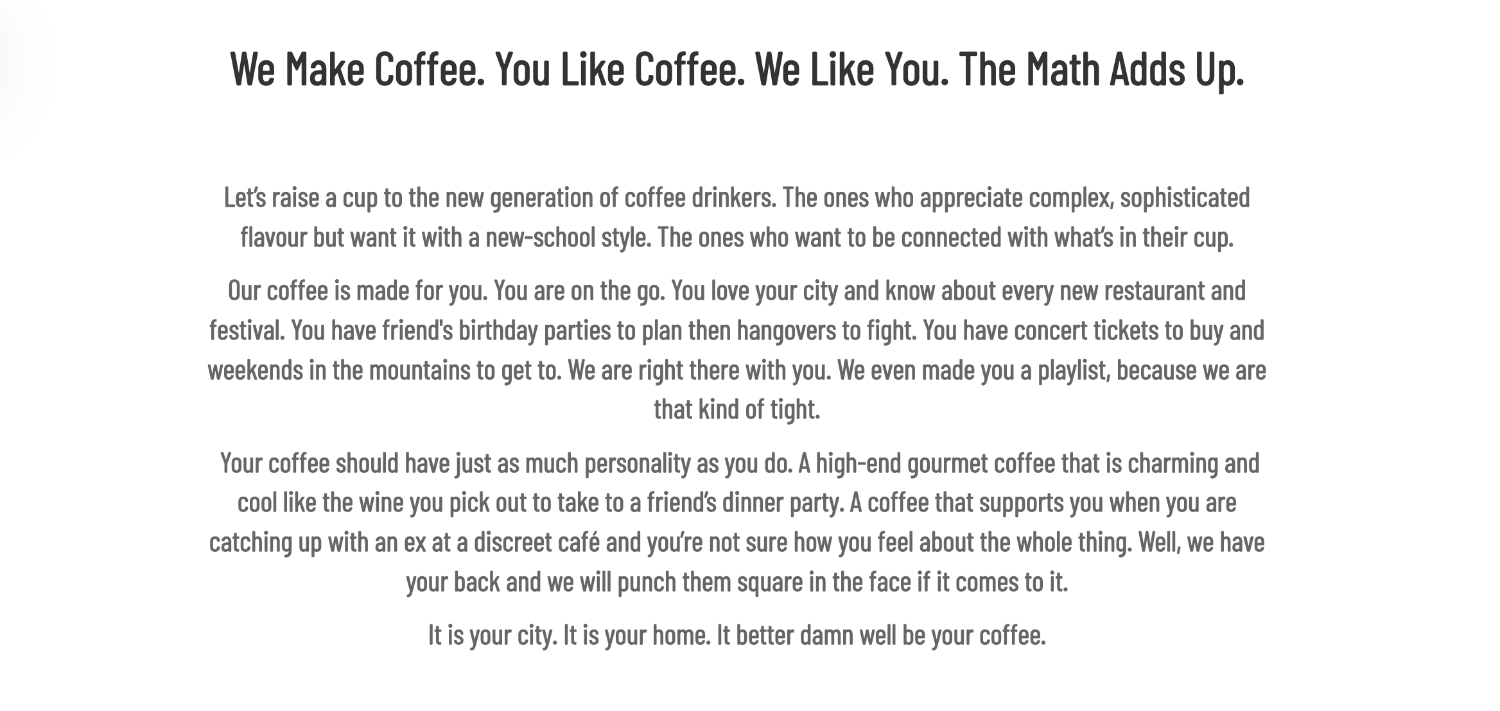
 While Rhianna may have a dynamic style and identity of her own, her brand, Fenty Beauty, is equally distinct—and it has the brand guidelines to prove it. The guidelines do a nice job of keeping the focus on the brand’s personality, while infusing a bit of Rhianna’s identity into it. But the focus remains on the brand’s visual identity and tone of voice, as well as guiding product packaging design.
While Rhianna may have a dynamic style and identity of her own, her brand, Fenty Beauty, is equally distinct—and it has the brand guidelines to prove it. The guidelines do a nice job of keeping the focus on the brand’s personality, while infusing a bit of Rhianna’s identity into it. But the focus remains on the brand’s visual identity and tone of voice, as well as guiding product packaging design.
Fenty Beauty sets out specific guidelines around tone, target audience, and use of typography to ensure brand consistency. Ben & Jerry’s is a brand with a very distinct visual style—many recognize its flagship typeface, even when it isn’t on the side of an ice cream pint. For a brand like Ben & Jerry’s, investment has gone into creating a distinct brand feel. Its brand guidelines are all about defining its brand story and ensuring the work put into it translates across all PR and marketing, down to the size of the font used in each heading.
Ben & Jerry’s is a brand with a very distinct visual style—many recognize its flagship typeface, even when it isn’t on the side of an ice cream pint. For a brand like Ben & Jerry’s, investment has gone into creating a distinct brand feel. Its brand guidelines are all about defining its brand story and ensuring the work put into it translates across all PR and marketing, down to the size of the font used in each heading.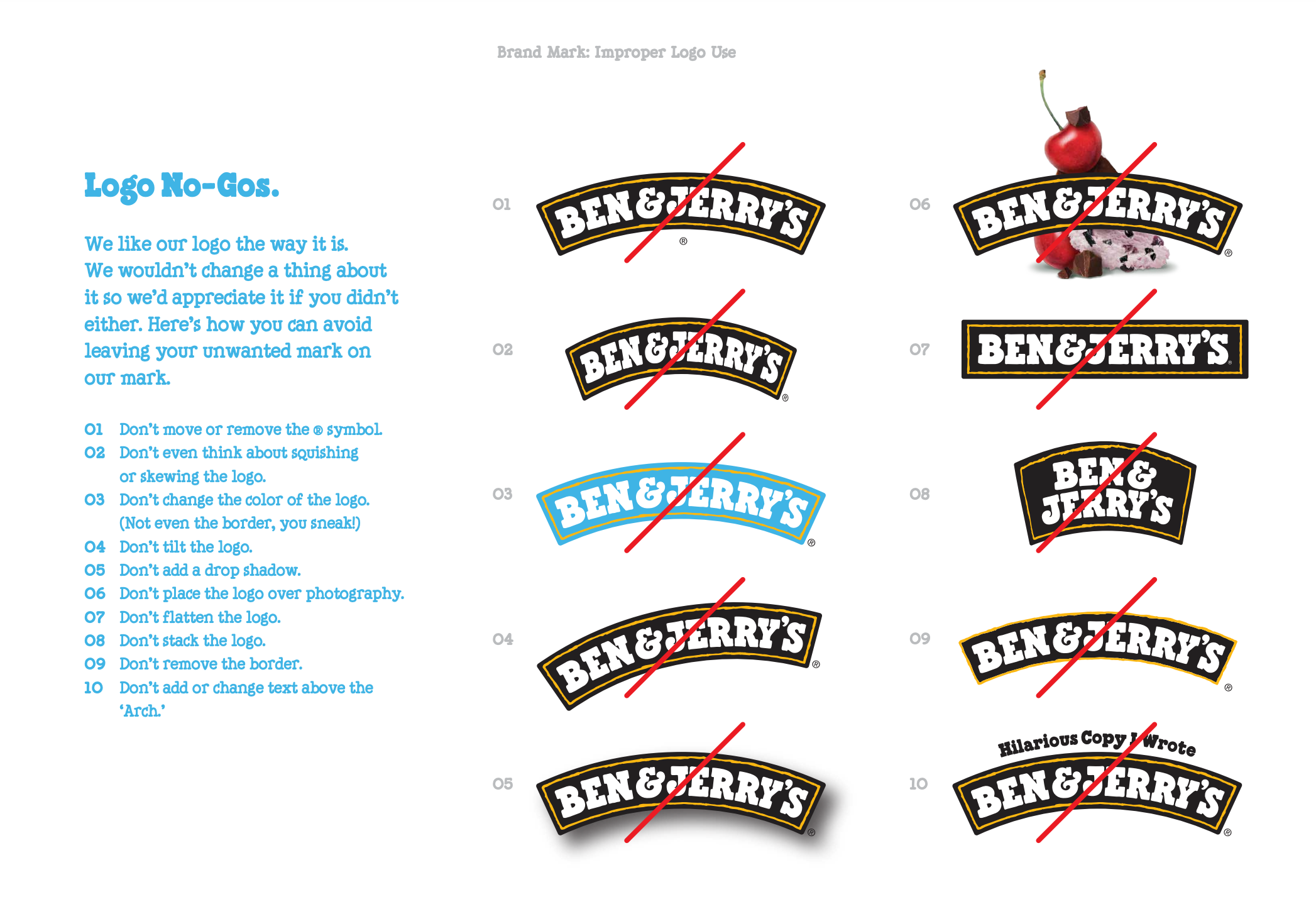
Ben & Jerry’s dedicates a few pages of its style guide to logo design standards, including how to integrate the logo with other design elements. Here, WeWork’s brand style guide shows how its brand elements work across different devices. With more than 500 locations creating workplace experiences for businesses through their design and the physical layouts, WeWork had its work cut out for it when it came to building out a brand style guide. Fortunately, WeWork’s guidelines deliver by being clear, concise, and unafraid of addressing controversial points where its stance defines the brand.
Here, WeWork’s brand style guide shows how its brand elements work across different devices. With more than 500 locations creating workplace experiences for businesses through their design and the physical layouts, WeWork had its work cut out for it when it came to building out a brand style guide. Fortunately, WeWork’s guidelines deliver by being clear, concise, and unafraid of addressing controversial points where its stance defines the brand.
💡 Tip: If your business includes physical locations, the experience customers have there becomes part of your brand—and that should be part of your brand guidelines, too.
Not all brand guidelines are effective. If you don’t approach your style guide with a strategic and pragmatic mindset, you’ll likely come up with something obsolete. Follow these three tips to ensure your style guide does the job you intend it to do.
Creating consistency across different media and channels admittedly isn’t easy. The key is to connect each element of your brand’s style back to one central theme: your mission.
A distinct and opinionated business mission acts as a center of gravity that influences everything your business does. Which products to carry, your marketing messaging, your pricing strategy—all of these decisions should be made with your mission in mind. The same goes for your brand guidelines.
Think about what your visual style says about your brand. Is it in line with your mission? How about the voice you use to speak to customers? What does it say about your brand?
If your mission is to build inclusivity by fulfilling the needs of underserved segments of the market, your brand guidelines should outline rules for pronoun usage. If your mission is to humanize and democratize a complicated, arcane industry, your brand voice may lean toward friendliness and approachability over formality.
As your business and team expands, effective brand guidelines become increasingly important. However, people can have different interpretations of those guidelines, especially since we’re discussing a concept that’s so subjective.
Branded templates for commonly used assets and projects can mitigate inconsistencies and misinterpretations. Branded templates also make it easier for folks who don’t know graphic design to come up with visual designs that meet brand standards.
It used to be that most brands could get away with one set of guidelines, but the rise of social media has complicated things.
Much of what’s considered normal or acceptable on social media doesn’t always align with other communication channels—you’ll need to define a much different tone to strike a balance between adapting to the norms of social media and maintaining your brand voice. That’s why your style guide should address things like whether or not your brand uses emojis or abbreviations and what kind of images it shares.
It’s recommended adding a separate section of your style guide for defining how your brand presents itself on social media. It’s helpful to specify the following:
If you’re wearing all the hats in your business right now, you might be able to go without brand guidelines for a time. But documenting the look and feel of your brand through clear brand guidelines is one of the best ways to create consistency across all of your marketing, especially as you scale up and onboard more people.
As your team grows or your business attracts more attention, create brand guidelines and a simple brand style guide to communicate that look and feel to new people—so your brand never gets watered down.
Brand guidelines are the standards a business sets for the attributes of its public communication. This includes elements such as colors, fonts, voice, logo, and design.
Brand guidelines are often the same as a style guide. The terms can be interchangeable. However, sometimes brand guidelines are more comprehensive, including elements such as brand story and history, values, and mission statement.
You should create brand guidelines to ensure consistency across all channels and touchpoints for every customer interaction. Brand consistency builds trust and ultimately drives sales. Brand guidelines also keep everyone on the same page—from staff to contractors to press—so that your brand is represented in the way you intended, no matter who’s talking about it.
Your brand guidelines should include the following:
The world’s best brands have comprehensive brand guidelines and a brand style guide that outline the rules for use of every brand asset and the brand’s tone of voice across every channel and touchpoint. Some of the best brand guidelines examples include Starbucks, Hulu, Netflix, Vans, and Fenty Beauty.
Keep up with the latest from Shopify
Get free ecommerce tips, inspiration, and resources delivered directly to your inbox.
By entering your email, you agree to receive marketing emails from Shopify.
popular posts
The point of sale for every sale.
popular posts
Nov 8, 2023
Sep 1, 2023
Dec 5, 2023
Nov 9, 2023
Sep 20, 2023
Nov 23, 2023
Dec 2, 2023
Nov 6, 2023
Subscribe to our blog and get free ecommerce tips, inspiration, and resources delivered directly to your inbox.
Unsubscribe anytime. By entering your email, you agree to receive marketing emails from Shopify.
Apr 10, 2024
Apr 9, 2024
Apr 9, 2024
Apr 9, 2024
Apr 4, 2024
Apr 3, 2024
Apr 2, 2024
Apr 1, 2024
Learn on the go. Try Shopify for free, and explore all the tools you need to start, run, and grow your business.
Try Shopify for free, no credit card required.

